Carved Pipe Of Wood, Copper Bowl Item Number: E6014-0 from the National Museum of Natural History
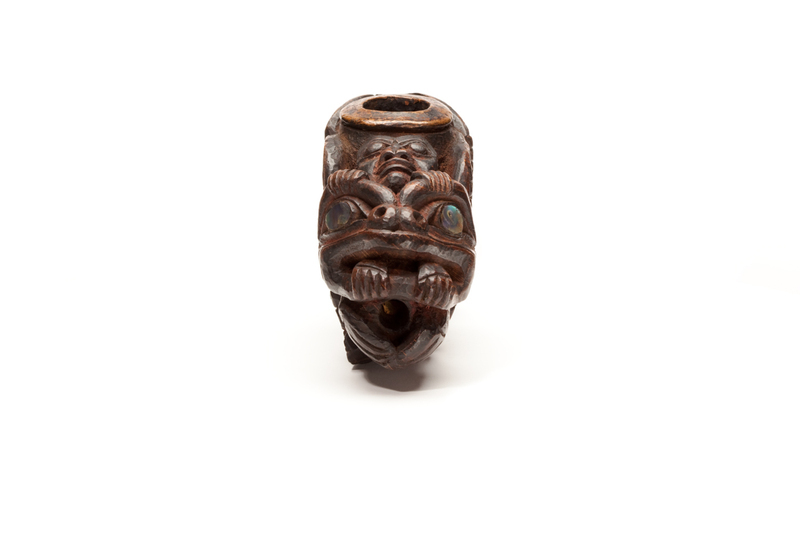

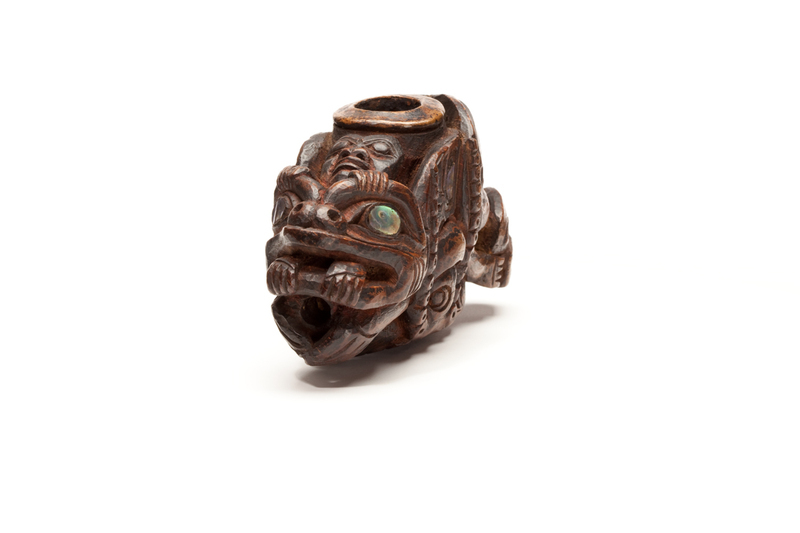
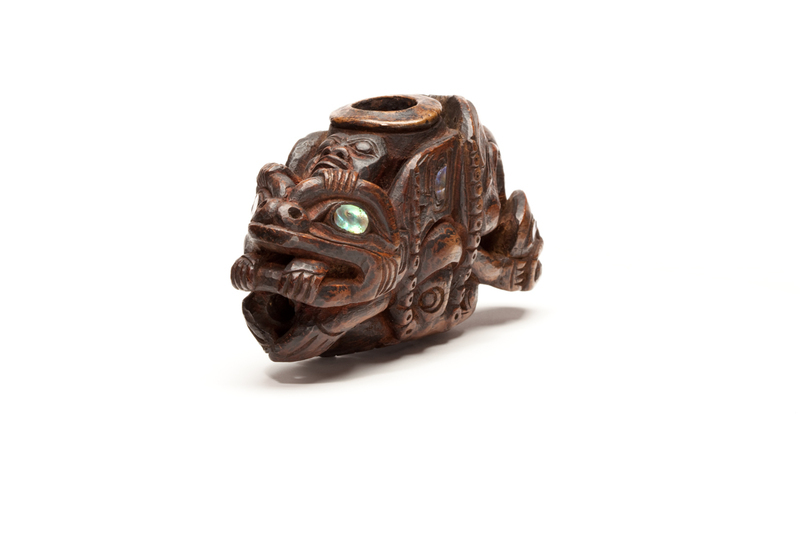





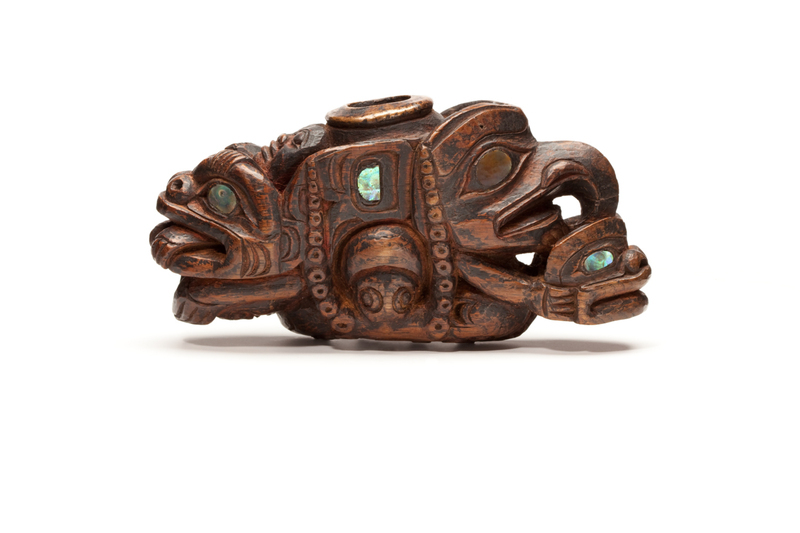
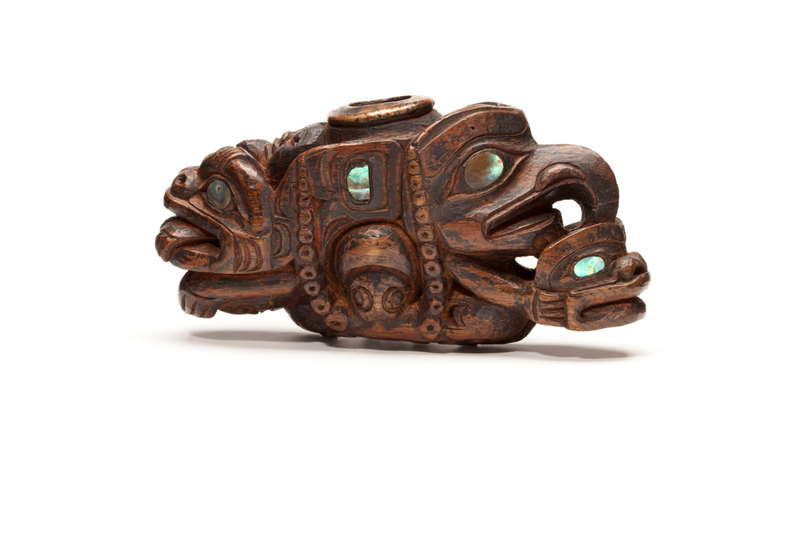
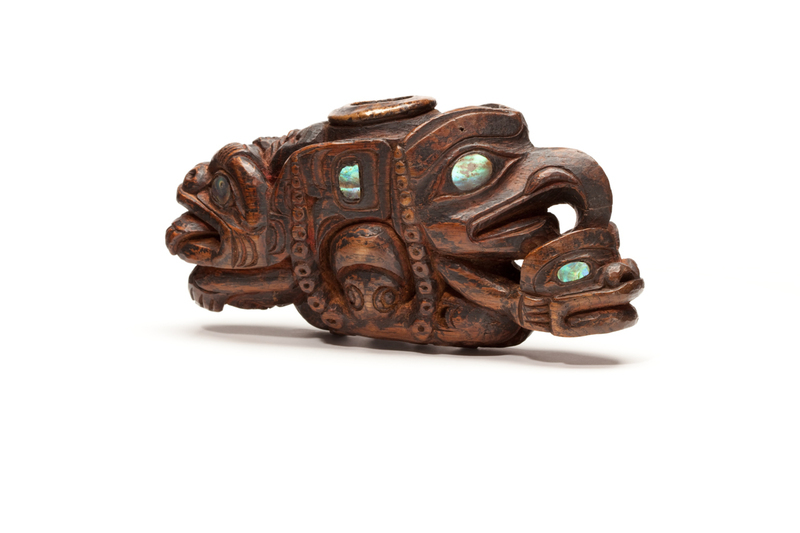
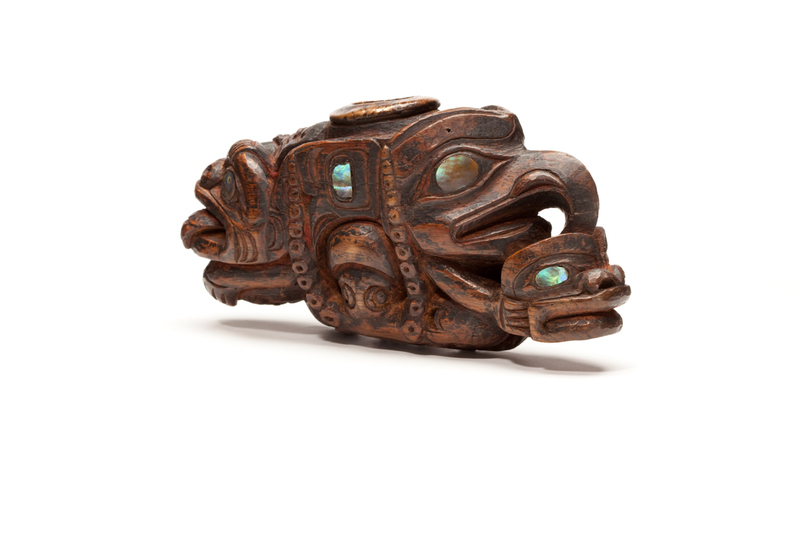




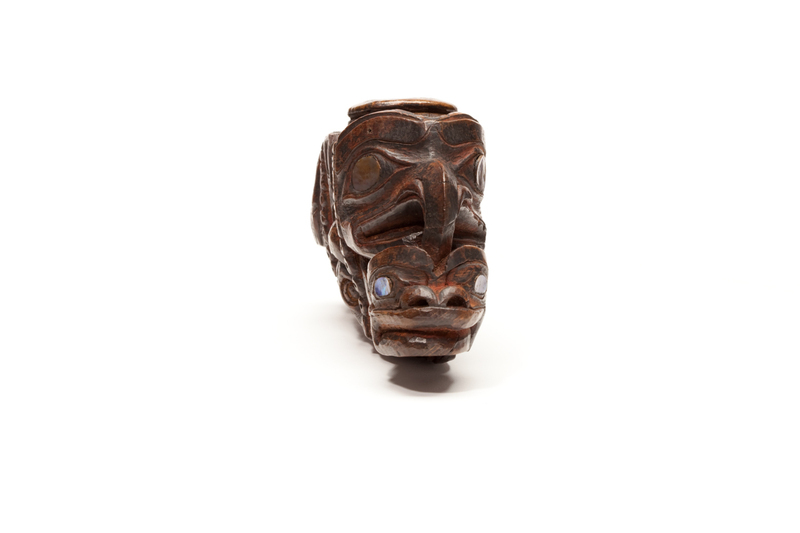
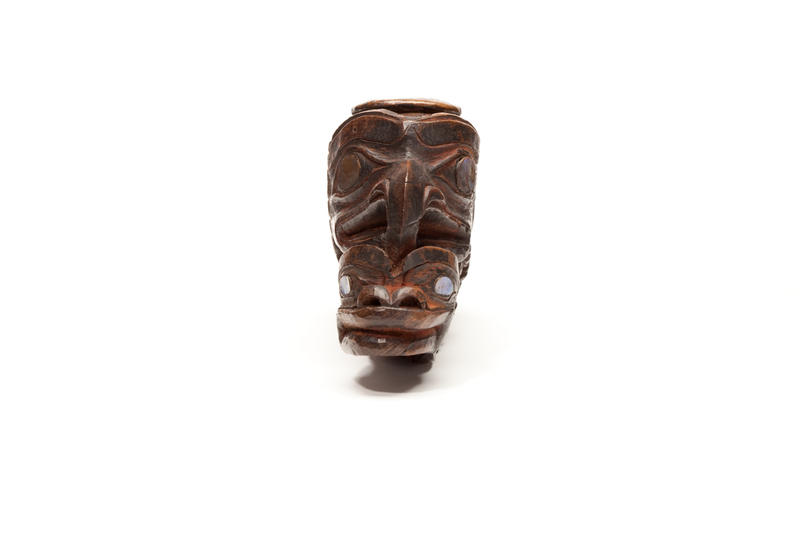
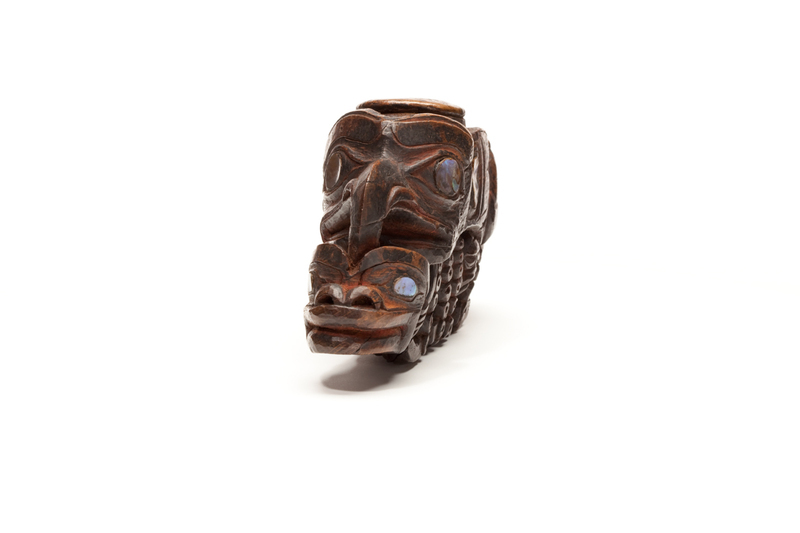
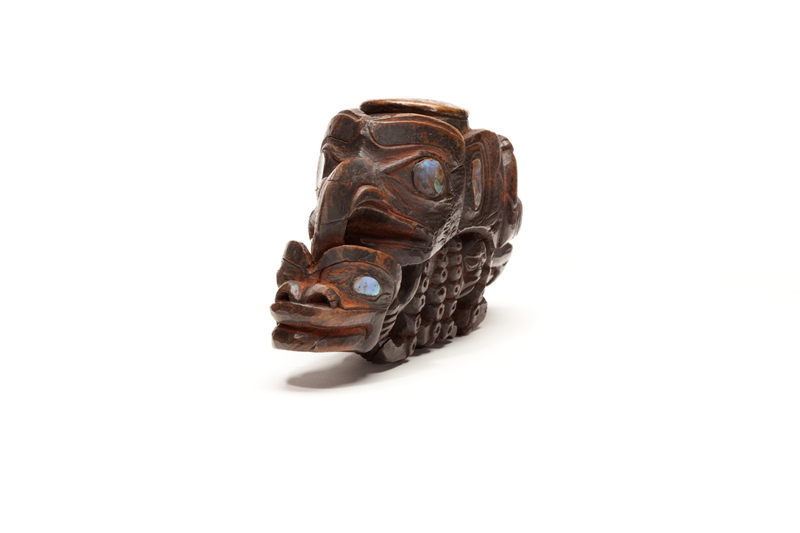




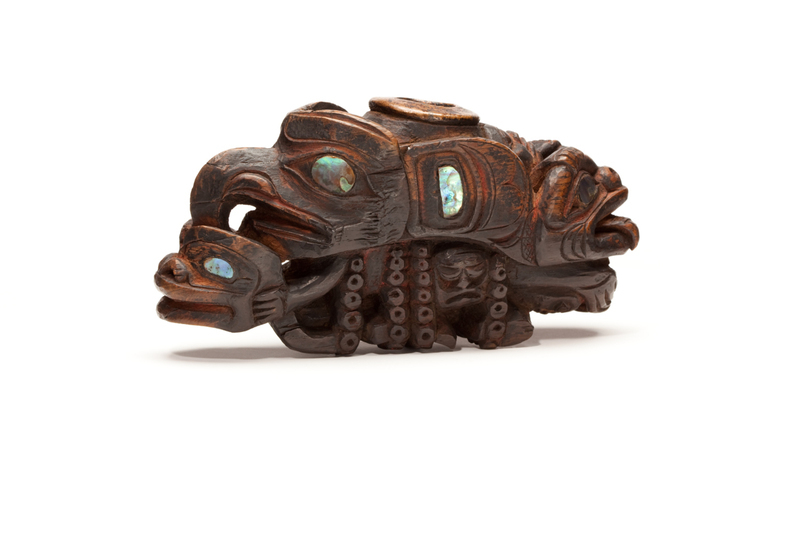
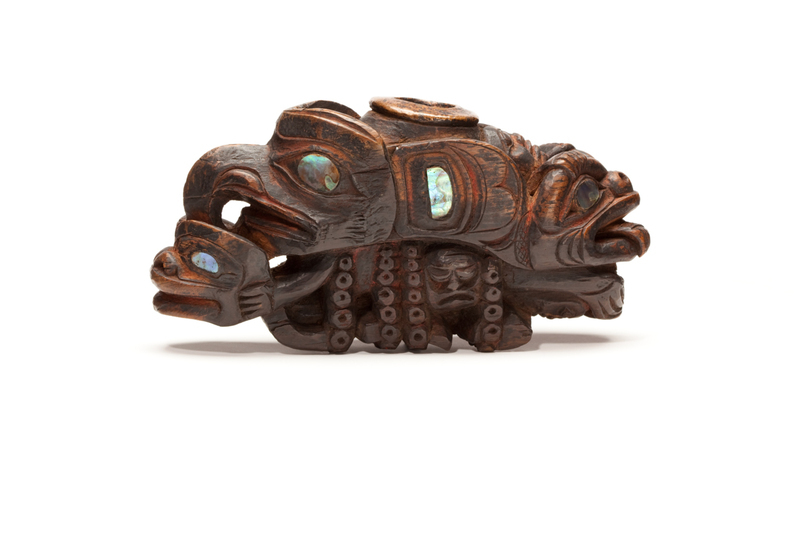


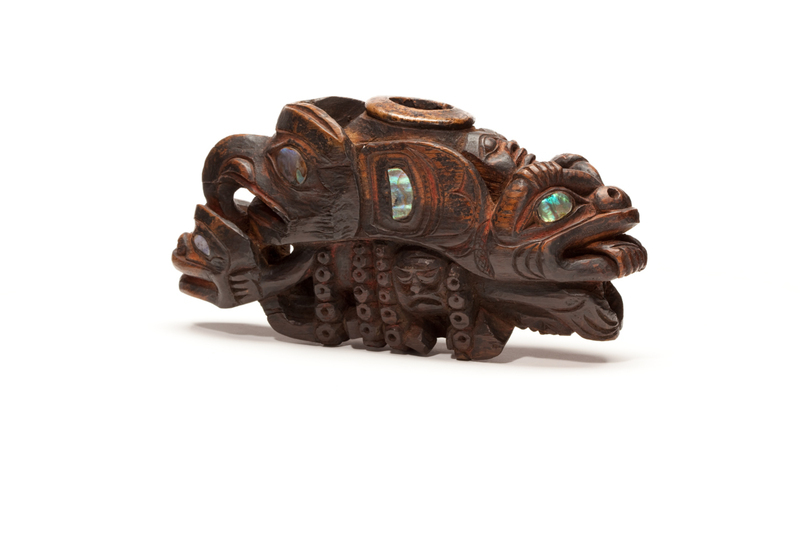

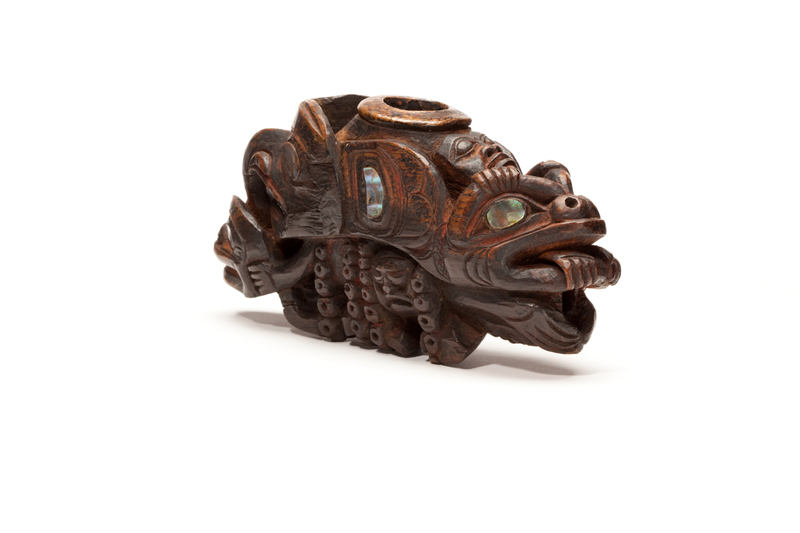




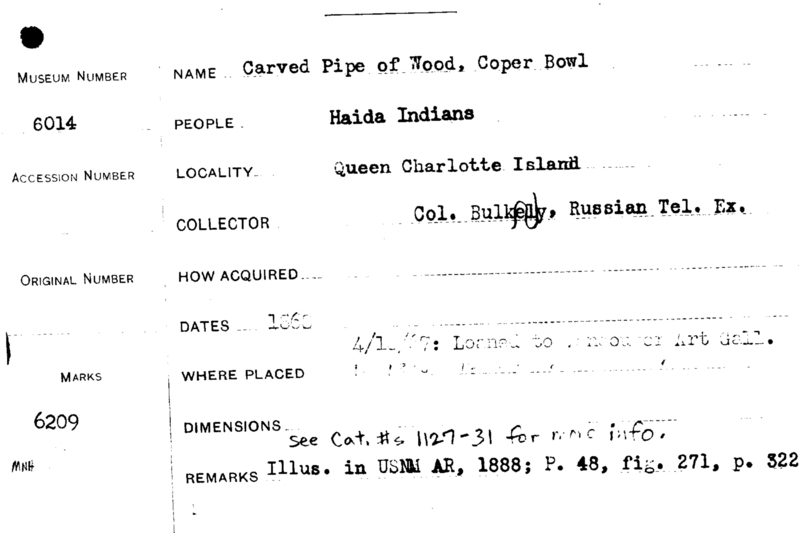
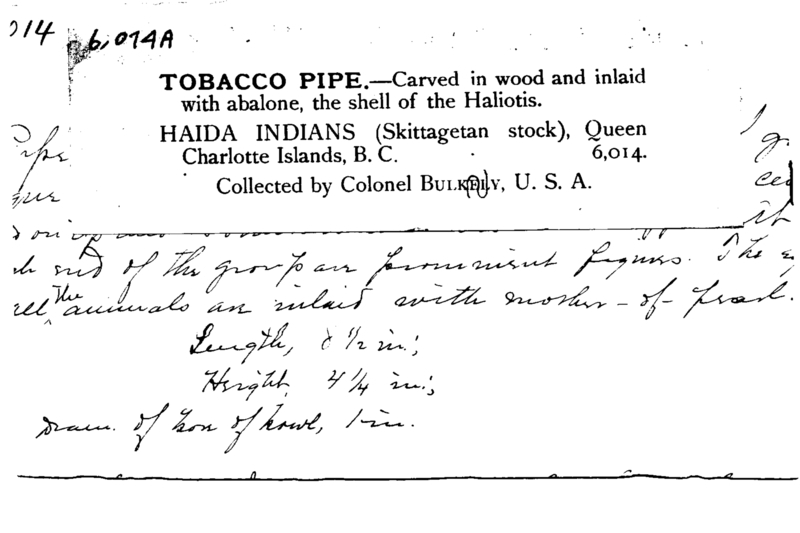



Notes
FROM CARD: "4/18/67: LOANED TO VANCOUVER ART GALL. 12/13/67: RETURNED BY VANCOUVER. SEE CAT.#S 1127-31 FOR MORE INFO. ILLUS. IN USNM AR, 1888; P. 48, FIG. 271, P. 322. 4/17/67 LOAN DATA: OK. 8 ABALONE INLAYS. LOAN: CROSSROADS SEP 22 1988. ILLUS.: CROSSROADS OF CONTINENTS CATALOGUE FIG.317, P.237. LOAN RETURNED: JAN 21 1993." Crossroads catalogue caption identifies as: "Pipe inlaid with abalone. Haida. Thunderbird, octopus, men, and monsters adorn this tobacco pipe that has a bowl lined with sheet copper." Possibly part of Accession No. 929?FROM 19TH OR EARLY 20TH CENTURY EXHIBIT LABEL WITH CARD: "6014. TOBACCO PIPE.-CARVED IN WOOD AND INLAID WITH ABALONE, THE SHELL OF THE HALIOTIS. HAIDA INDIANS (SKITTAGETAN STOCK), QUEEN CHARLOTTE ISLANDS, B. C. COLLECTED BY COLONEL BULKLEY, U. S. A."This object is on loan to the Anchorage Museum at Rasmuson Center, from 2010 through 2027.Source of the information below: Smithsonian Arctic Studies Center Alaska Native Collections: Sharing Knowledge website, by Aron Crowell, entry on artfact http://alaska.si.edu/record.asp?id=502 , retrieved 6-24-2012: Pipe, i.e. tobacco pipe The carved figures on this Haida pipe include an octopus, a horned animal, and an eagle or thunderbird holding a mask with a human face. No Haida interpretation of this crest imagery was recorded by collector Charles S. Bulkley, who headed the Canadian section of the Western Union Telegraph project during 1865-67. Bulkley acquired the pipe at a village in the Queen Charlotte Islands, British Columbia.
Item History
- Made in British Columbia, Canada
- Collected by Col. Charles S. Bulkley in British Columbia, Canada between 1865 and 1867
- Received from Accession Number Unknown
What
- Name
- Carved Pipe Of Wood, Copper Bowl
- Identification Number
- E6014-0
- Type of Item
- pipe
Who
- Culture
- Haida
- Field Collector
- Col. Charles S. Bulkley
- Received from
- Accession Number Unknown
Where
- Holding Institution
- National Museum of Natural History
- Made in
- British Columbia, Canada
- Collected in
- British Columbia, Canada
When
- Collection Date
- between 1865 and 1867
Other
- Accession Number
- 000000